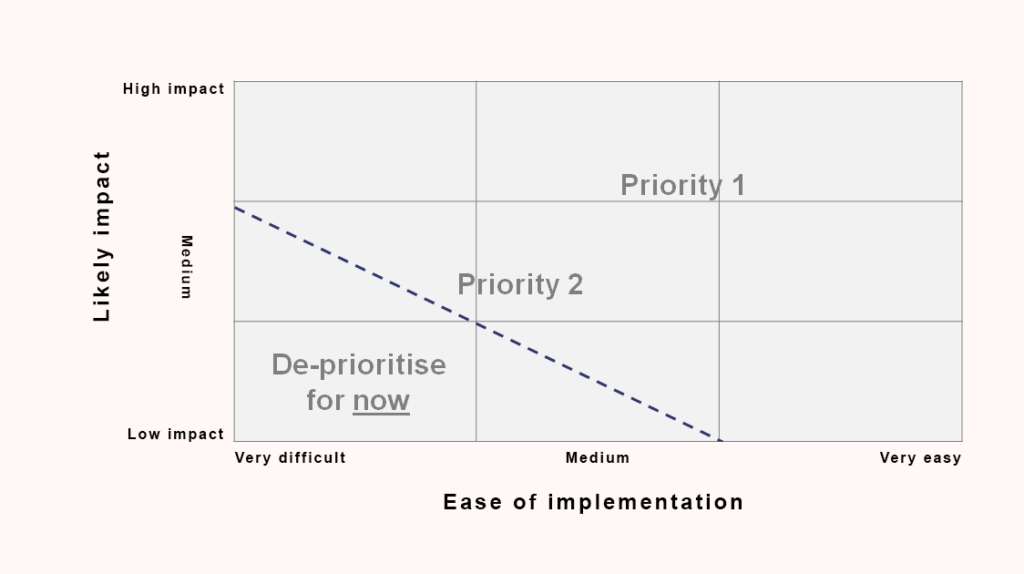In a recent Rubica poll 67% of people said their number 1 team working challenge right now was getting clarity on what to prioritise.
Anchoring people back to a shared ‘vision’, your ‘purpose’ and ‘why you are focusing on this’ is a highly stabilising practice (particularly during times of uncertainty or change), as it enables a team to understand what the priority is (right now) and to become really focused on it. Here we share some ideas on where to start…
Tip 1: Building team understanding on the top priority
Keep it simple when setting priorities and avoid over-complicating the process. This will help to create useful conversations and encourage participation from the whole team. To do this, try using a simple matrix (see Fig.1 as an example) during a 10-15-minute team check-in (either virtually or face-to-face). The matrix will help to focus discussions, by highlighting the priorities that are easiest to implement and have the highest impact – helping people to decide what to prioritise for the week ahead or deprioritise for the time.
Fig. 1

Top tip
Go through the prioritisation process early in team meetings rather than towards the end. This helps a team make choices early and quickly so that work is moved forward in relation to shared goals vs individual projects.
 Miranda Wheatley Price -
Miranda Wheatley Price - 

